The Federal Reserve has been the investor’s best friend for a very long time. For 13 years, if stocks fell a mere 10%-15%, the Fed immediately intervened with promises of ultra-low, interest rate stimulus.
And when the pandemic crash of 2020 threatened to burst the Fed’s stock bubble? The Powell-led Fed digitally printed trillions on top of trillions.
Now, however, we are seeing the adverse consequences of government money printing gone awry. The dollar’s purchasing power is eroding at a pace not seen in 40 years.
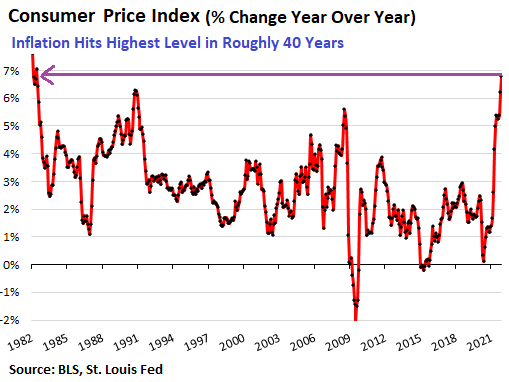
It follows that that the Federal Reserve will have exceedingly difficult choices to make in 2022. Fight inflation with verbal (and actual) rate increases to combat inflation. Or, when the market inevitably threatens to fall 20% or more, return to the old script of saving stocks and real estate.
At present, stock market dynamics are dicey. Consider the definitive rise in Nasdaq volatility. The average daily movement of the index is significantly higher than it has been for the majority of Decembers since the 2008 financial collapse.
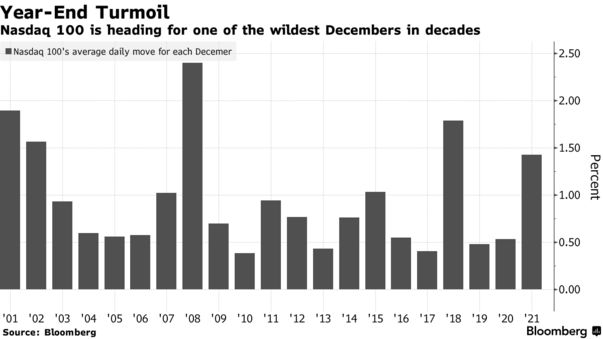
Market internals are also beginning to buckle. For instance, the New York Stock Exchange’s Advance-Decline (AD) Line has fallen below its 50-day and 200-day moving averages for the first time since the pandemic’s onset.
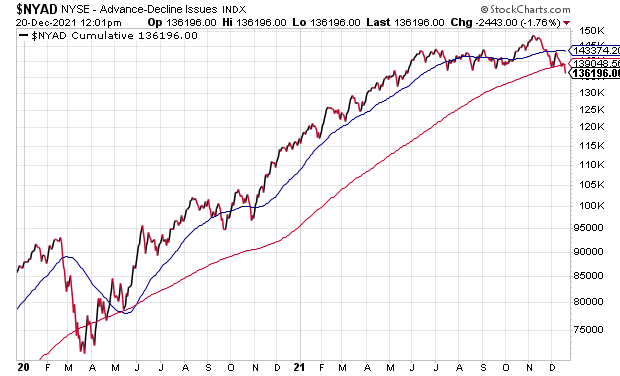
In a similar vein, defensive stocks are starting to outpace growth-oriented securities.
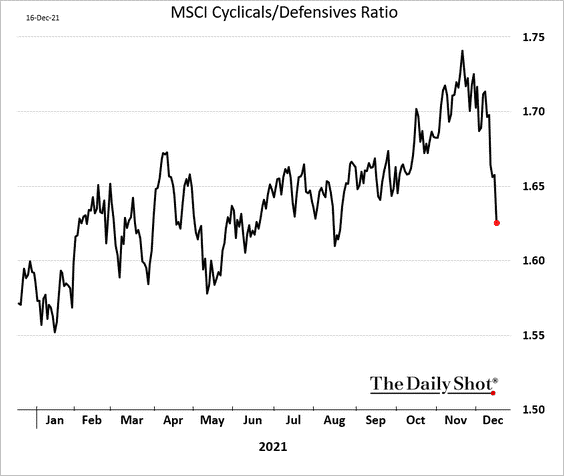
Equally telling? The yield curve is precariously close to inverting.
Specifically, if the Fed raises its overnight lending rate two or three times in 2022, the 10-year Treasury bond yield might offer less than the 2-year Treasury bond. The “inversion” is a tell-tale sign of mounting recessionary pressures.
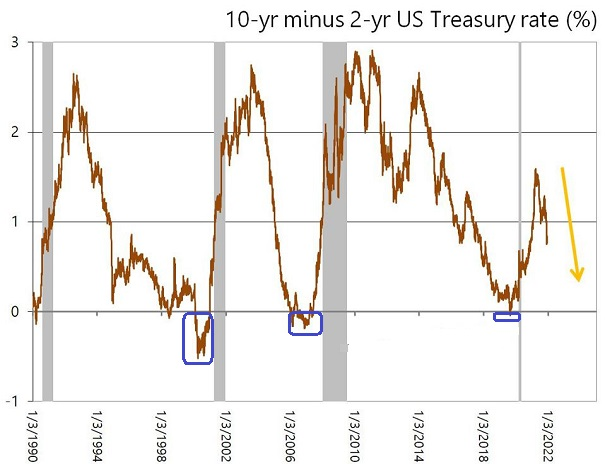
Bottom line? The Fed’s mandate to tame consumer price inflation may be in direct conflict with its desire to inflate stock and real estate prices.
For the most part, the investment community is still betting that the Fed will choose to maintain the stock bubble. Borrowing to bet on stock success is as silly as it was during February and March of 2000… back when the dot-com stock bubble burst.
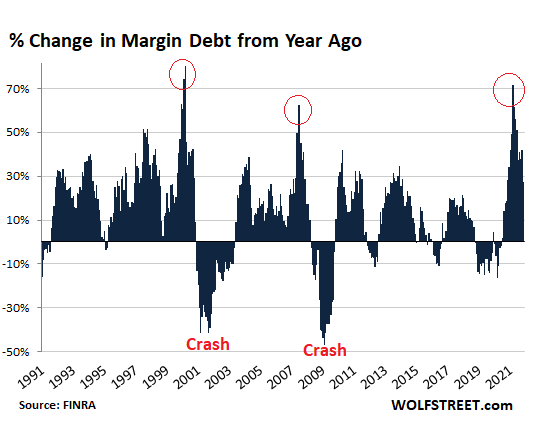
Would you like to receive our weekly newsletter on the stock bubble? Click here.
